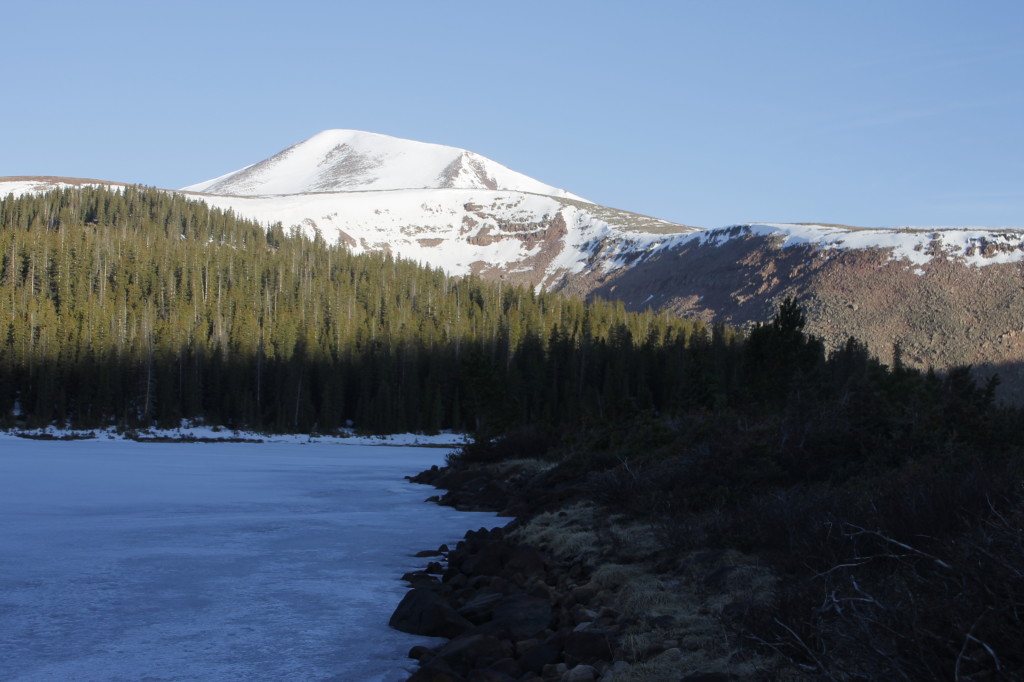
Start with ice: gray crystals laid out across the lake in a dull mat, splotches of deeper gray, tiny white sparks where the crystals reflect the sunlight just so.
A small line of translucent iridescence marks where ice meets the water’s edge. And there’s a small canal of open water between the freeze and the sun-warmed rocks that forced the ice back.
The surface scintillates in the shifting breeze. There isn’t enough room for waves, just oscillations that obscure the sky and clouds above and jostle stray ice fragments. Silent rocks sit unmolested beneath the agitation, wearing beards of algae. It’s a different story above water; only the faintest layer of lichen grows here, making it possible to appreciate the red orange striations on the stones.
Life doesn’t assert itself until at least a foot above the lake. First, there are the black clods of half-rotted moss. It oozes around the rocks, and smothers them like a dirty blanket. Not a very warm blanket. It’s saturated with snowmelt from above. Brownish rivulets run off onto shore. When I walk barefoot, the water squirts up from between my toes.
Brittle tufts of strawlike grass root by the lake edge, then the willows fill in. Their gray deathly branches have already shot out magenta shoots and buds. One of these has burst already, revealing a pea-sized catkin, coated with silken hairs. The willows only hold a small band of ground until the first pines push them out. The first of them are dwarves, their bundles of needles trembling in the wind. Further back they climb high and straight as rockets, leaving a fractal trail of green black branches behind them.
The needles on younger trees are a lighter green and seem softer as they huddle in amongst their mightier parents. They too will harden up after they see what the winter has to throw at them. Many trees didn’t make it; their dead trunks stand in place amidst the green or else bleach in full sun. My gaze moves across the lake to where the forest climbs a hill, defying the thinning air and winter’s wrath. But even they can only climb so far. Above them rise the mighty flanks of Mount Emmons.
A waste of shattered stone sterilized by frigid winds, ramparts of billion-tear-old Uinta Mountain Group stone defy the ravenous elements. Fields of snow march along their crests, rising to jagged cornices above an immense bowl. No sustenance in this bowl — five-hundred feet of snow and rock carved out by the violence of glaciations. I can see the place where a cornice has broken off and plunged down the side in an avalanche.
Ridges fly out from the mountain, blocking the trees’ advance. It is easy to imagine that the forest is under attack from on high, but in reality the mountain provides the spring melt necessary for the life below. Beyond the bowl, Emmons presents its eastern front, a wall of snow and broken rock that rises at least a thousand feet into the air. The place is its own, a clash of elemental forces, without the meddling interference of life. Or so I would have thought had I had not witnessed the tufts of grass and lichen eking out an existence there.
From where I sit, I can watch shadows march across the brutal stone and empty snow. I see that final peak stark in the face of the rending elements, a bulwark against the softening of spring and drifting clouds.
